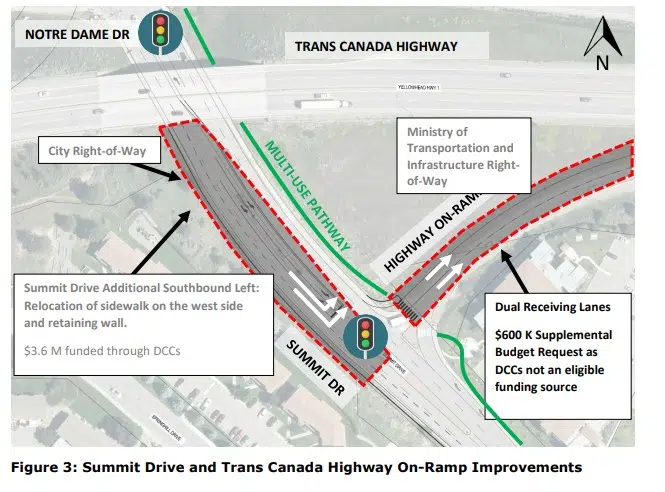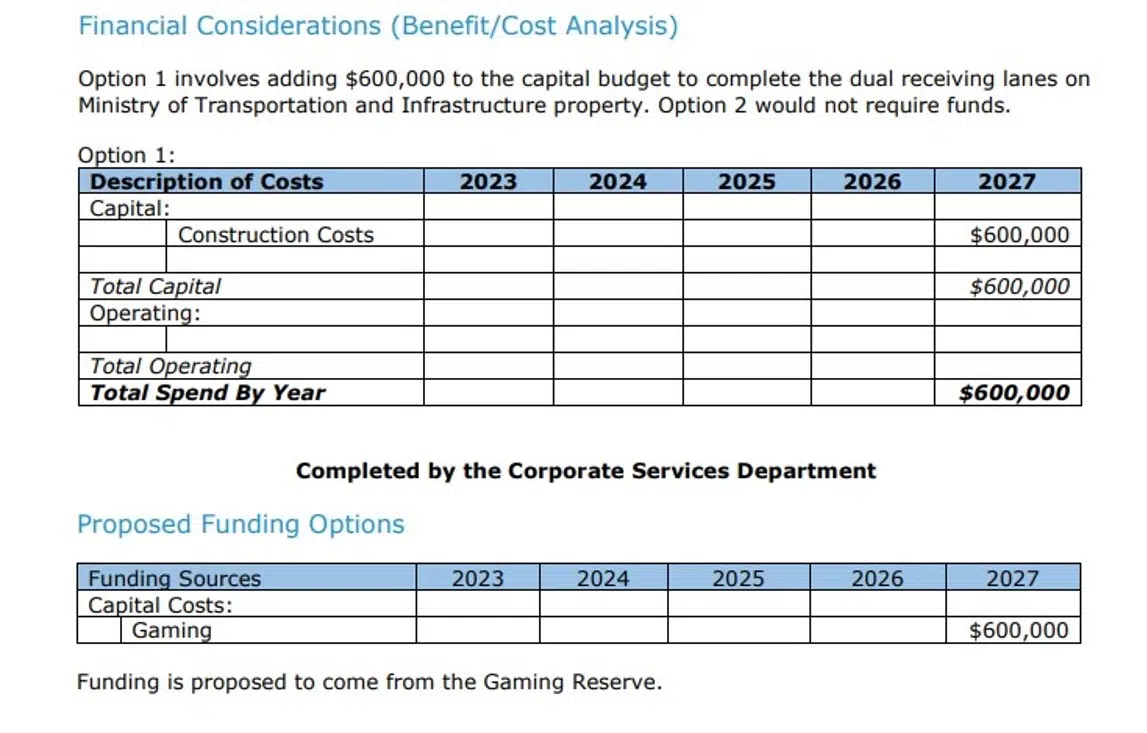
The City of Kamloops is planning to turn a single left turn lane from Summit Drive onto the Trans Canada Highway in Sahali into a double lane.
Work is expected to happen in 2027, which is when Development, Engineering, and Sustainability Director, Marvin Kwiatkowski, says the city is expecting to see an increase in vehicles waiting to turn onto the highway.
“In order to efficiently move traffic off Summit and into a left turn back onto the highway ramp there is a need for the double turn there in a few years time,” Kwiatkowski told NL News.
“We would have to in order to push those two new southbound lanes over, we would have to move into the boulevard and move the sidewalk over in order to accommodate the extra turning lane. We just have to work within the right of way that we have and move some of the instructor and put in a retaining wall.”
City staff say while the new traffic signal installed last year at the intersection of Summit Drive and the Trans Canada Highway on-ramp has improved safety and reduced congestion, modelling shows that by 2026, the anticipated growth in traffic volumes waiting to get onto the highway will lead to longer queues and greater delays.
“This may have negative impacts on the traffic operational performance of the upstream intersection of Notre Dame Drive and Summit Drive due to the proximity of the two signalized intersections,” a staff report said.
Kwiatkowski says the total project is estimated to cost around $3.6 million, though he noted that figure includes a 40 per cent contingency to account for price fluctuations due to things like inflation.
“A majority of that project would be covered from development cost charges because it is due to growth and it is on city right of way,” he said. “The final $600,000 that is on ministry right of way can’t be covered at this point in time by development cost charges, hence that is where the supplemental budget comes in.”
At this point, the City is anticipating to use gaming grants to pay that $600,000 cost, though Kwiatkowski says there is a push to see provincial legislation changed to allow the use of DCC’s to pay for growth related projects on ministry right of ways.
“I got my fingers crossed that come 2027 there will be a change in the legislation and those typos of projects would be eligible for development cost charges,” Kwiatkowski added, noting if that happens, taxpayers wouldn’t be paying for these upgrades.
Kwiatkowski says there are two reasons for the delay to 2027, instead of moving ahead say next year when similar upgrades are planned for the Pacific Way Exit 367 off-ramp from the Trans Canada Highway or last year when work on the Summit multi-use pathway was taking place.
“Having the right funding in place is one reason,” he said. “In the past we haven’t been as good as predicting because we didn’t have a dynamic traffic model. We have that now so we can do better work in advance in predicting when these upgrades would be required and get them in the budget.”
“As well, typically you push projects out to kind of when you need to do it, just as far as funding goes. Just like your roof in your house, if it needed in ten years, do you put in on years three or four? You probably wait till year 10 right? You want to maximize the life of any type of infrastructure that you put in, and if it is not required right away, it is better to wait.”
City council is set to make a final decision on the 10 supplemental items that are part of this year’s budget on March 7.















